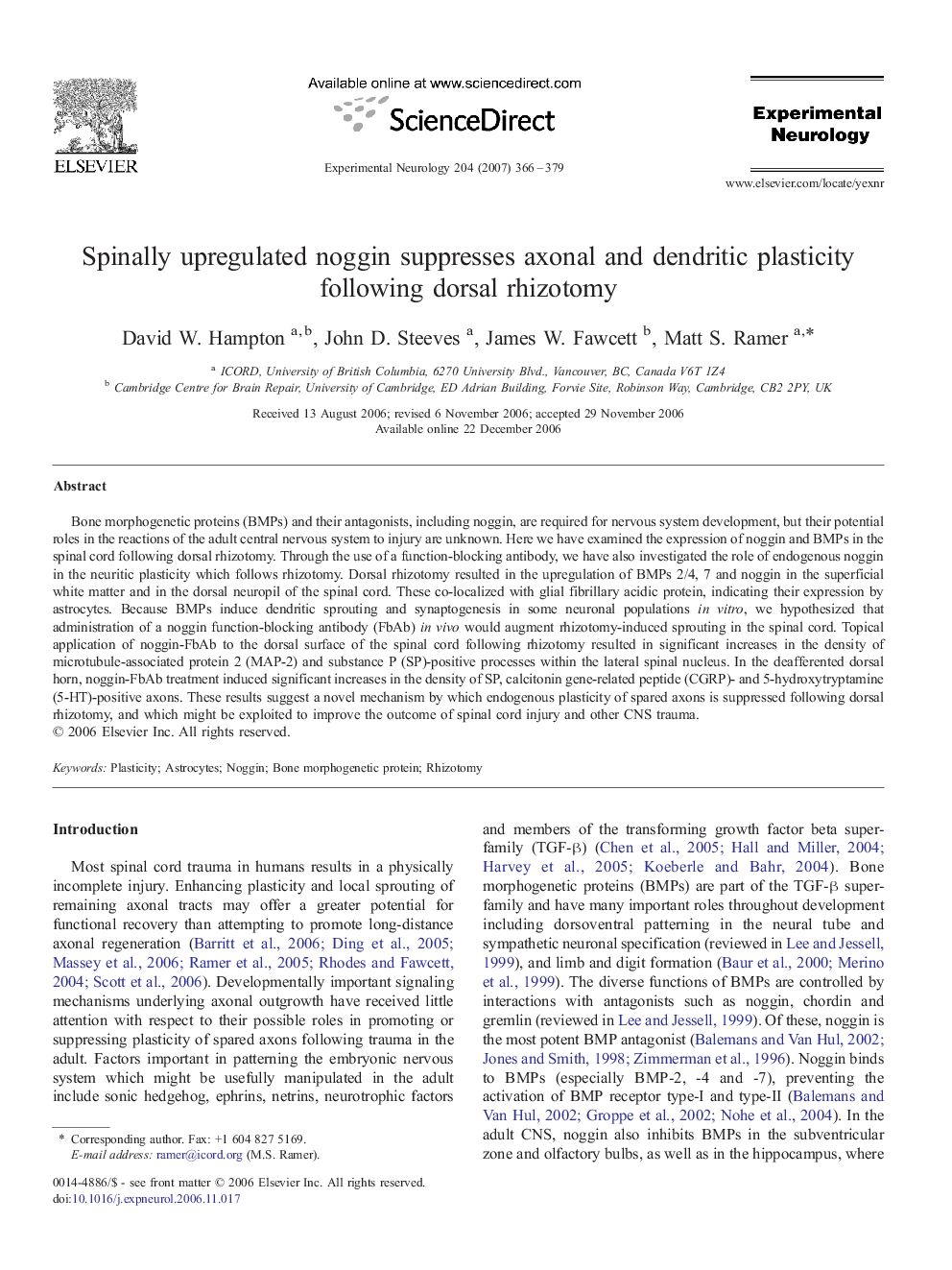| Article ID | Journal | Published Year | Pages | File Type |
|---|---|---|---|---|
| 3057190 | Experimental Neurology | 2007 | 14 Pages |
Bone morphogenetic proteins (BMPs) and their antagonists, including noggin, are required for nervous system development, but their potential roles in the reactions of the adult central nervous system to injury are unknown. Here we have examined the expression of noggin and BMPs in the spinal cord following dorsal rhizotomy. Through the use of a function-blocking antibody, we have also investigated the role of endogenous noggin in the neuritic plasticity which follows rhizotomy. Dorsal rhizotomy resulted in the upregulation of BMPs 2/4, 7 and noggin in the superficial white matter and in the dorsal neuropil of the spinal cord. These co-localized with glial fibrillary acidic protein, indicating their expression by astrocytes. Because BMPs induce dendritic sprouting and synaptogenesis in some neuronal populations in vitro, we hypothesized that administration of a noggin function-blocking antibody (FbAb) in vivo would augment rhizotomy-induced sprouting in the spinal cord. Topical application of noggin-FbAb to the dorsal surface of the spinal cord following rhizotomy resulted in significant increases in the density of microtubule-associated protein 2 (MAP-2) and substance P (SP)-positive processes within the lateral spinal nucleus. In the deafferented dorsal horn, noggin-FbAb treatment induced significant increases in the density of SP, calcitonin gene-related peptide (CGRP)- and 5-hydroxytryptamine (5-HT)-positive axons. These results suggest a novel mechanism by which endogenous plasticity of spared axons is suppressed following dorsal rhizotomy, and which might be exploited to improve the outcome of spinal cord injury and other CNS trauma.
